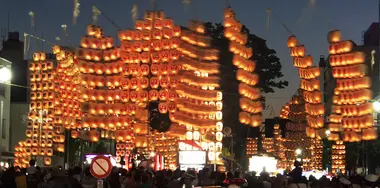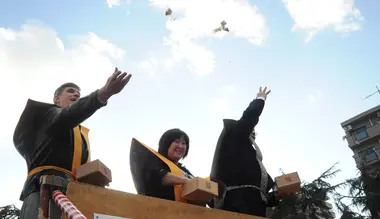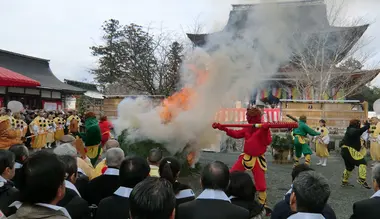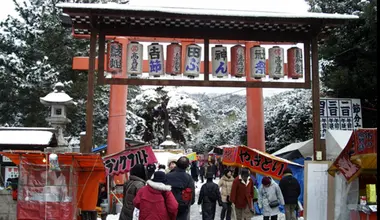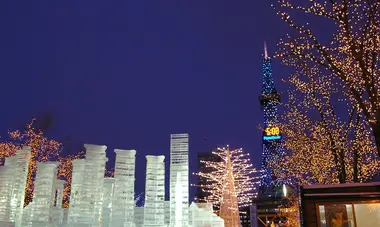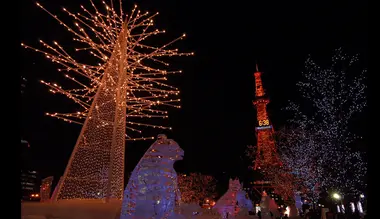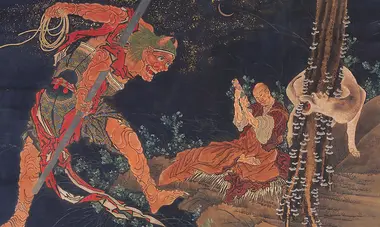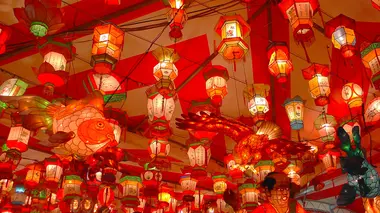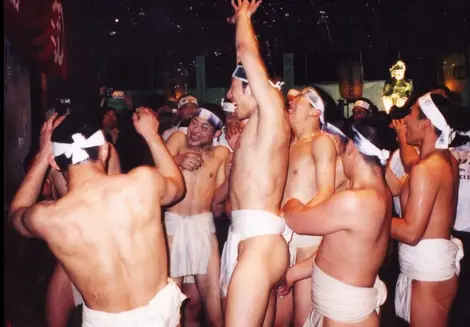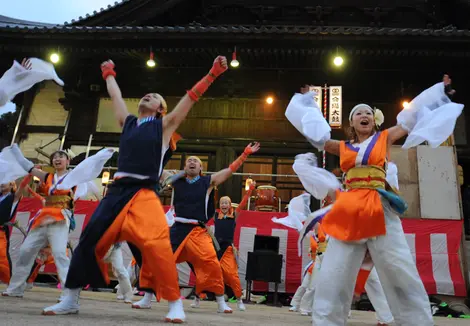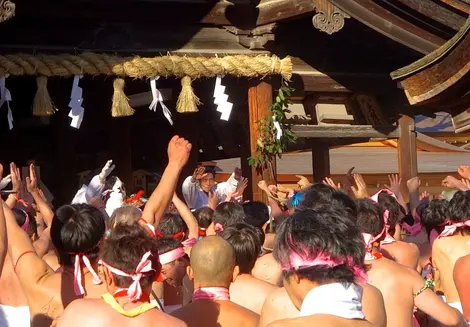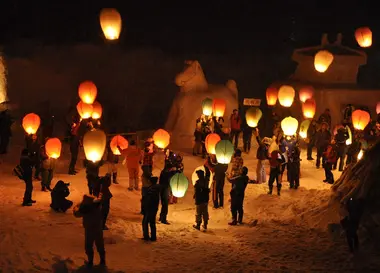Japan Festivals - February
February is a unique time to explore Japan. With snowy landscapes and deep-rooted traditions, the festivals held during this month offer a magical and authentic glimpse into Japanese culture. Here is a list of must-attend events for an unforgettable trip.
Akita Kanto Winter Festival
Dates: February 15-16
Location: Yokote, Akita Prefecture
This festival features stunning kamakura, traditional Japanese igloos lit by candles. Visitors can enter these small snow houses to enjoy mochi (rice cakes) and hot tea. A warm experience not to be missed in the heart of Japan's winter.
Setsubun
Date: February 2
Location: Across Japan, especially at Sensō-ji Temple in Tokyo and Yasaka Shrine in Kyoto
Setsubun is a national holiday marking the end of winter according to the Japanese lunar calendar. On this day, beans are thrown (“mame-maki”) to drive away demons and bring good fortune. Ceremonies at iconic locations like Sensō-ji Temple and Yasaka Shrine offer a festive and spiritual experience.
Sapporo Snow Festival
Dates: February 4-11, 2025
Location: Sapporo, Hokkaido
This world-famous event transforms Sapporo into a kingdom of ice and snow. Gigantic and artistic sculptures are displayed across several sites in the city, accompanied by lights and interactive activities.
Oni Matsuri
Dates: February 10-11
Location: Toyohashi, Aichi Prefecture
The Oni Matsuri, or Demon Festival, is a unique celebration to ward off evil spirits and ensure a prosperous year. Traditional rituals and demon costumes create a mystical atmosphere.
Nagasaki Lantern Festival
Dates: Around Chinese New Year (January 29 - February 12, 2025)
Location: Nagasaki
One of Japan's most colorful festivals, inspired by Chinese traditions. Thousands of lanterns illuminate the city, creating a magical atmosphere in the streets of Nagasaki. Perfect for photography enthusiasts and culture lovers.
Okayama Hadaka Matsuri
Date: Third Saturday in February
Location: Saidaiji Temple, Okayama
Known as the “Naked Men Festival,” this event sees thousands of participants braving the cold in loincloths to catch sacred amulets thrown by priests. Held at Saidaiji Temple, the festival is a thrilling mix of spiritual devotion and physical endurance, with the amulets believed to bring good luck. The energetic atmosphere is filled with chanting and the sounds of drums, making it a unique and exciting experience
Otaru Snow Festival
Dates: February 8-15, 2025 (often overlaps with the Sapporo Snow Festival)
Location: Otaru, Hokkaido
The small port city of Otaru transforms into a fairy tale, with illuminated streets and ice sculptures. A perfect extension for those visiting the Sapporo festival.
Kamihinokinai Paper Balloon Festival
Dates: February 10 each year
Location: Nishiki, Akita Prefecture
The Kamihinokinai Paper Balloon Festival is a stunning event where paper balloons are launched into the night sky, carrying wishes and prayers. The festival offers a magical, fairy-tale like visual experience as the glowing balloons float peacefully into the dark sky, creating a mesmerizing sight.
Yokote Kamakura Festival
Dates: February 15-16
Location: Yokote, Akita Prefecture
Similar to the Winter Kanto Festival, this event showcases kamakura and features an impressive number of igloo-shaped constructions. This centuries-old tradition presents snow carpets dotted with light, creating a warm atmosphere with activities for families and visitors of all ages.
Cuisine to Discover
The February festivals in Japan are also an opportunity to savor winter specialties. Enjoy mochi and hot tea in the kamakura in Yokote, or indulge in local ramen and soups at the stalls of the Sapporo Snow Festival. Each event offers delights that warm the body and soul.
Practical Tips
If you plan to attend these festivals, be sure to wear warm, waterproof clothing, especially in northern Japan like Hokkaido and Akita. Also, consider booking your accommodations and transportation in advance, as these events attract many visitors. Finally, respect local customs, such as removing your shoes before entering a kamakura or following guidelines for photography.
With so many captivating festivals, Japan in February is a top destination for culture and winter beauty lovers. Get ready to be amazed by the richness and diversity of Japanese traditions!

